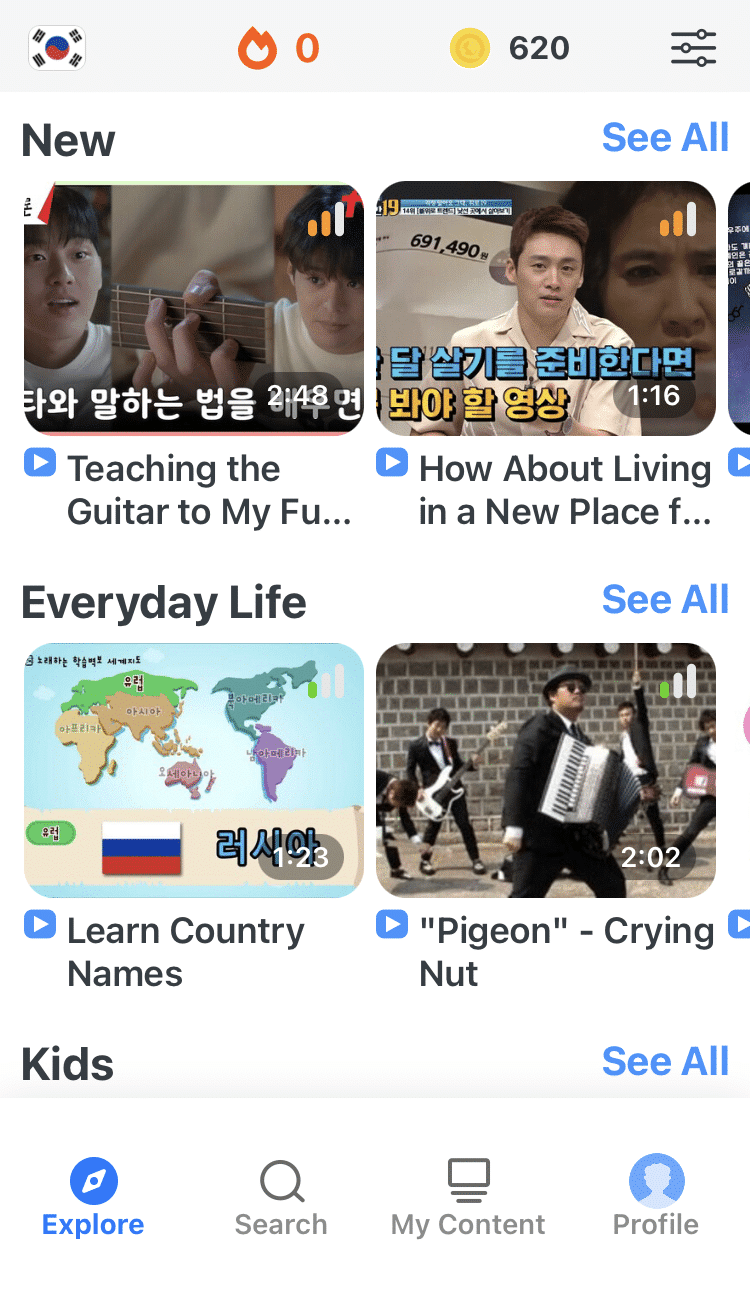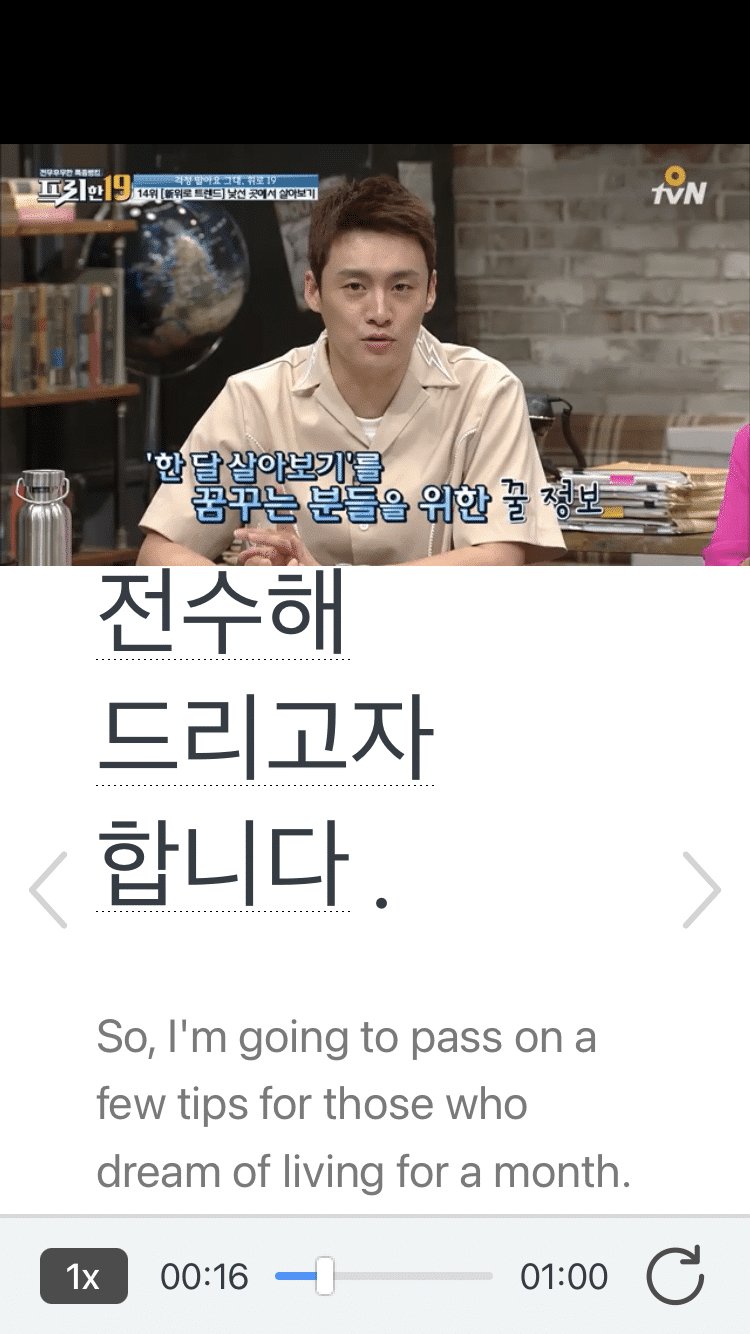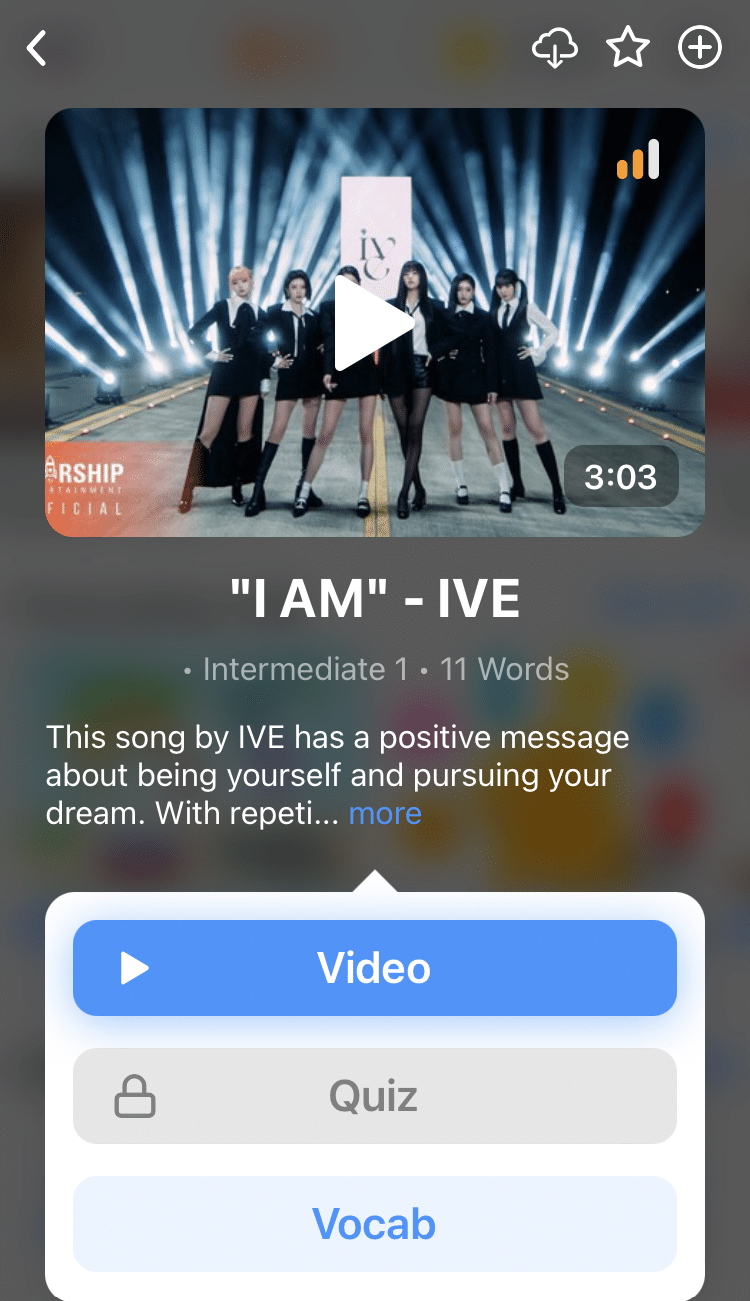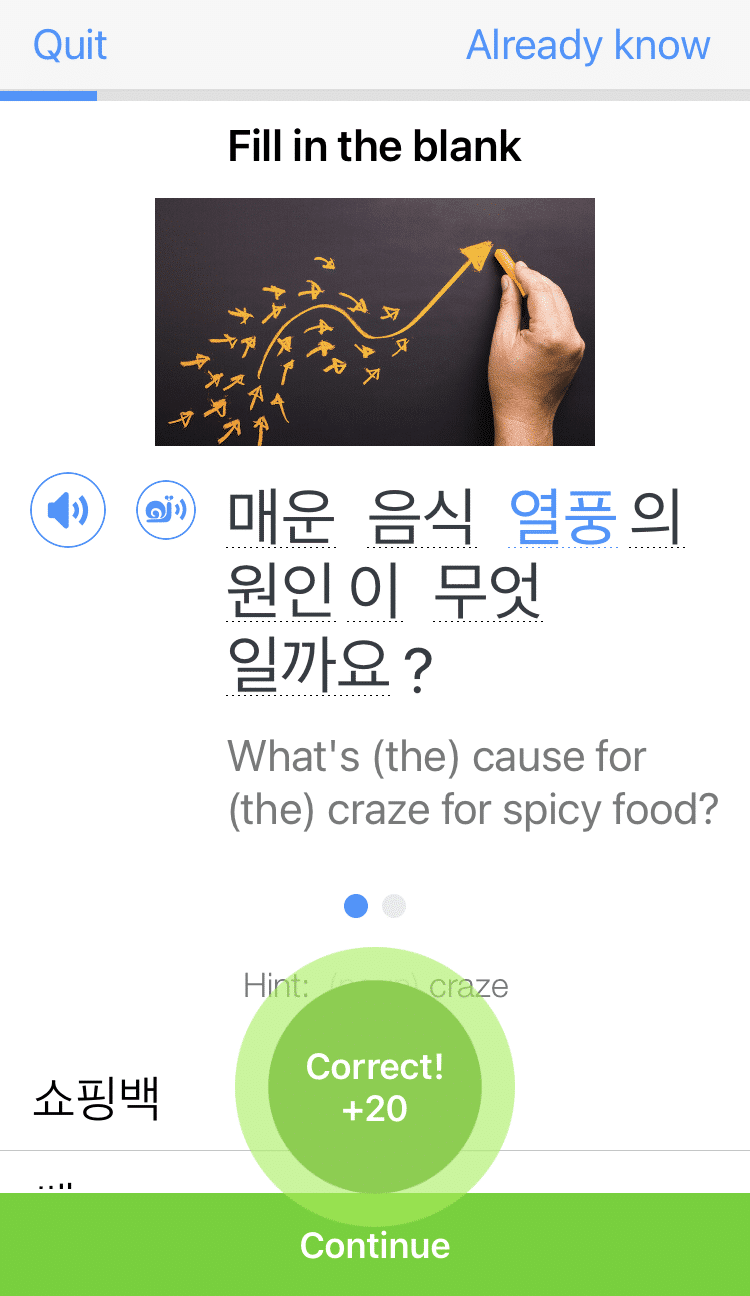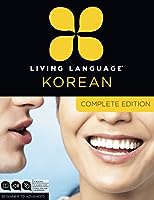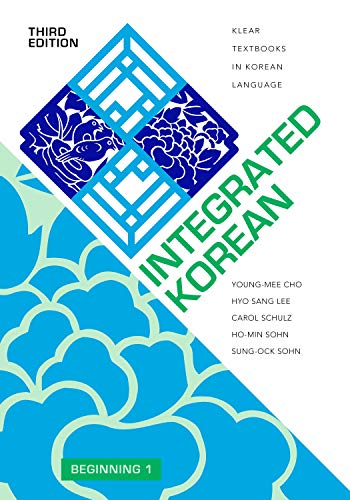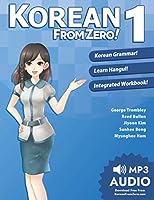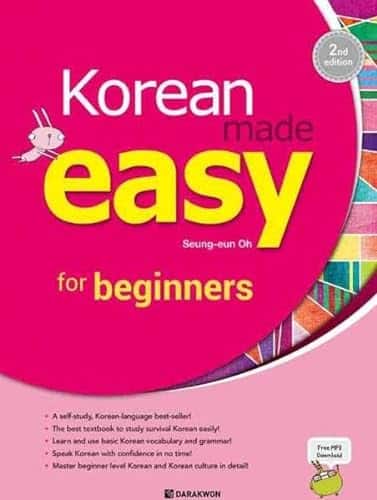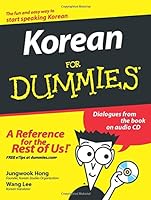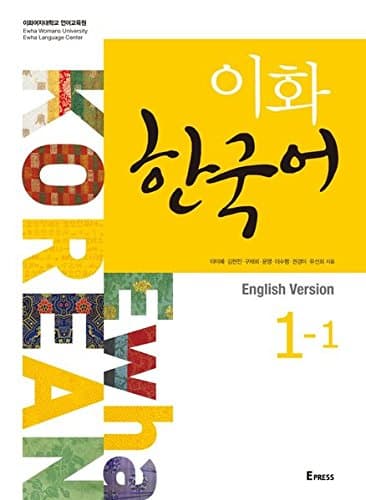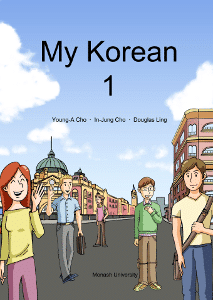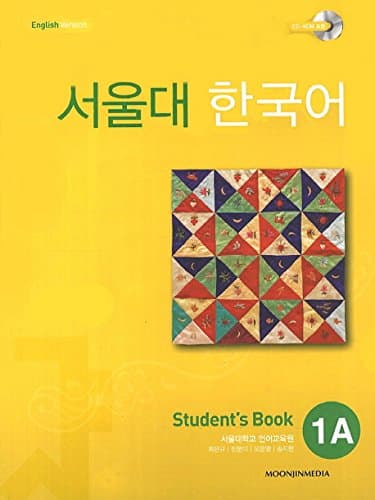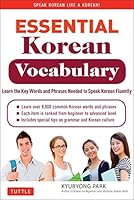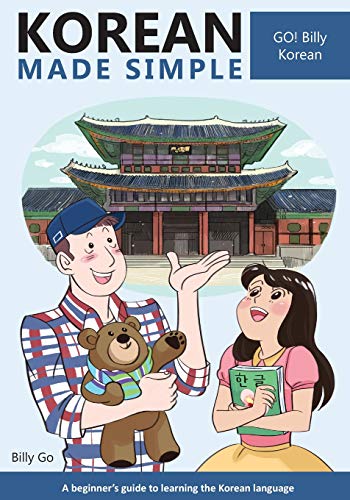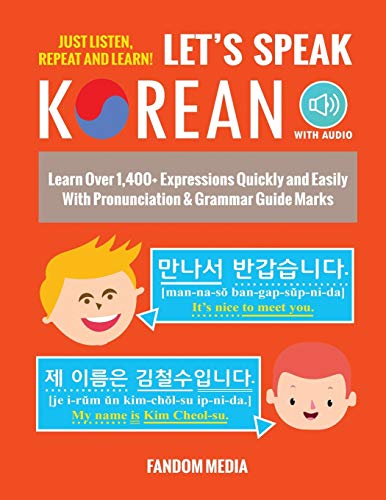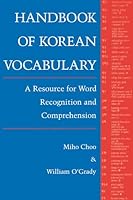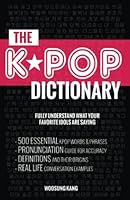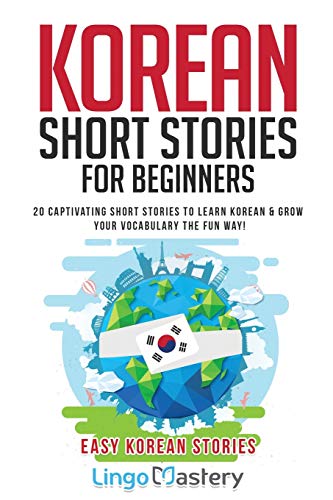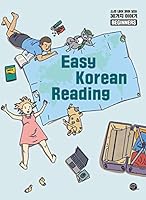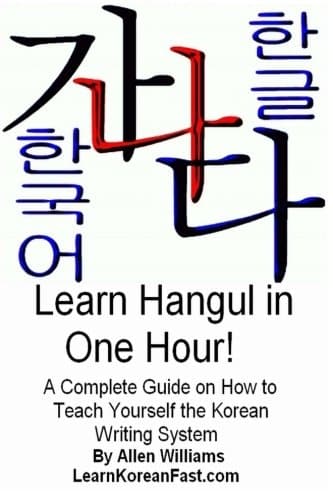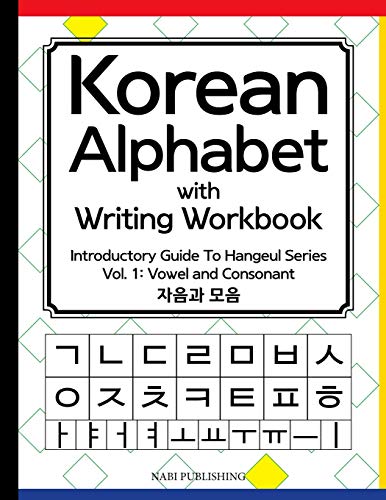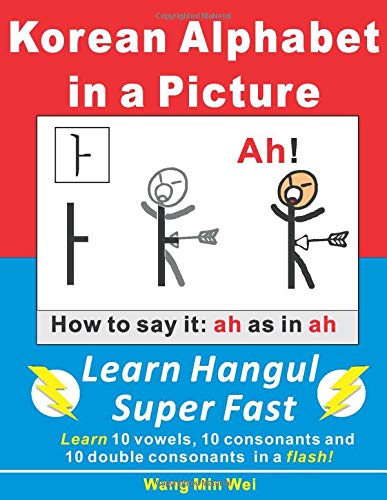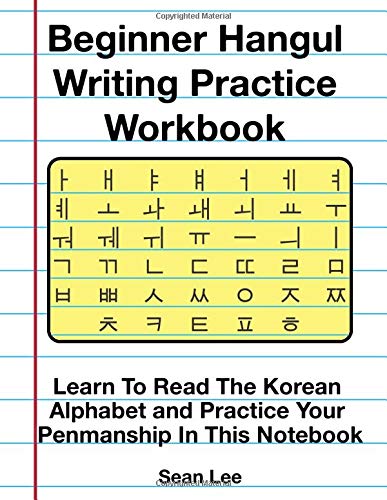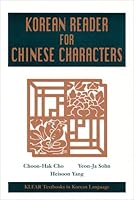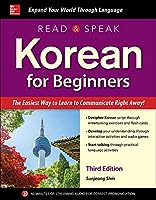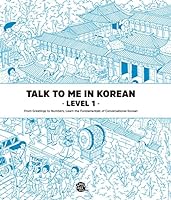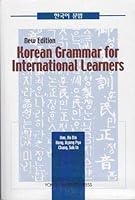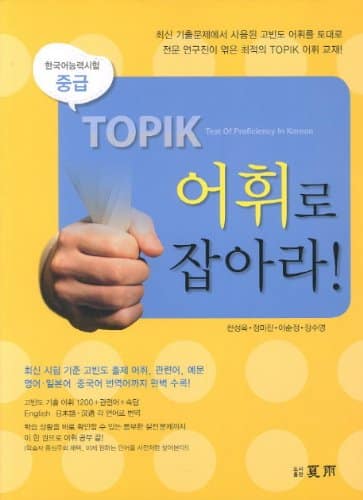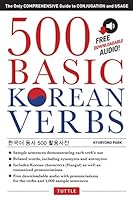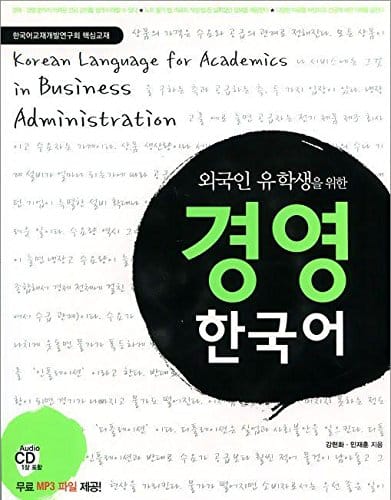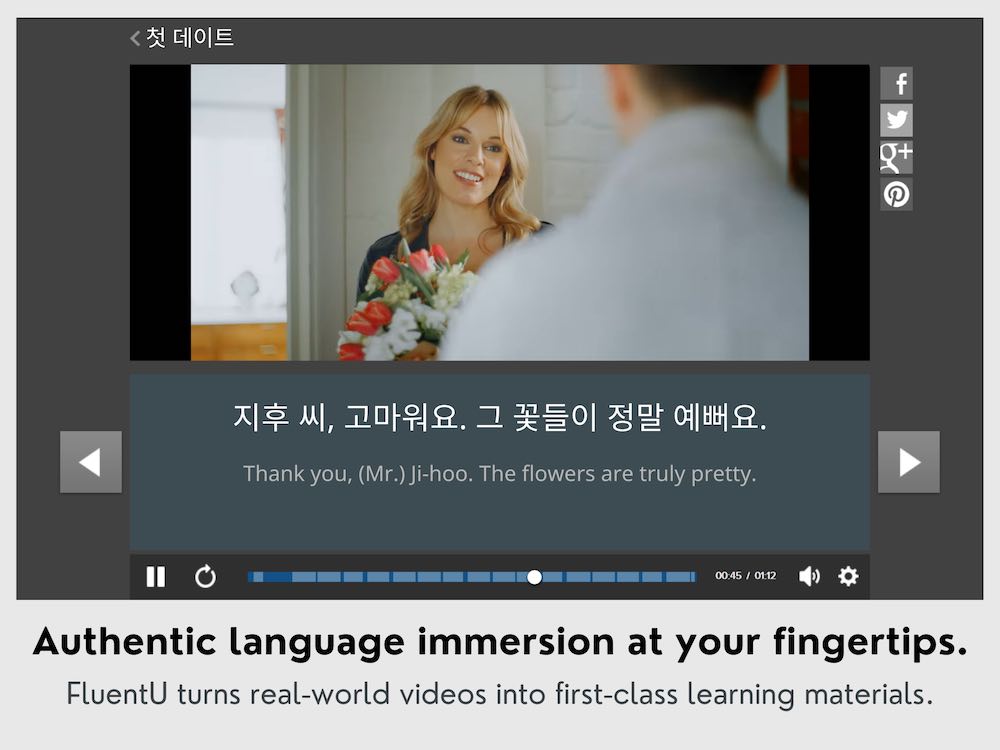
The 26 Best Books to Learn Korean
There are tons of incredible ways to learn a language nowadays—many of them digital.
Of course, learning a language with a textbook is still beneficial.
In fact, many textbooks now come with digital components, so it’s easy (and helpful) to combine methods to make the most of your language studies.
If that sounds appealing, then check out these recommendations for the 26 best Korean learning books!
Contents
- Korean Books for Beginners
- Best Korean Textbooks
- Korean Books for Vocabulary & Phrases
- Korean Books for Reading and Writing Skills
- Korean Books for Other Language Skills
- FAQ About Learning with Korean Textbooks
- And One More Thing...
Download: This blog post is available as a convenient and portable PDF that you can take anywhere. Click here to get a copy. (Download)
Korean Books for Beginners
1. “Living Language Korean”
Focal area: General Korean textbook
Features: Multiple books, audio CDs, additional learning materials
This Korean textbook boasts some seriously positive reviews and it certainly makes sense why. It’s not just a textbook—it’s an entire learning package!
By purchasing “Living Language Korean,” you get four books, nine audio CDs and a free “Language Lab” that comes with additional learning materials like quizzes, games, flashcards and more.
Complicated grammar and difficult vocab are broken into easy-to-digest pieces with simple, clear explanations. You can go from beginner to advanced with this one complete course, using techniques that have been tested and proven effective.
2. “Integrated Korean: Beginning 1”
Focal area: Korean textbook for beginners
Features: Accompanying workbook, audio files
This textbook is ideal for absolute beginners with no prior Korean experience. It was created by Korean linguists and teachers to use effective teaching techniques to get the information across.
Lessons are based around certain topics, each of which contains a dialogue, relevant vocabulary, explanations of the grammar and cultural notes, as well as an additional passage to present the new information in context.
Each new edition of the book has been improved and enhanced based on user feedback. The current book includes attractive visuals and an accompanying workbook. You can also download audio on the website.
3. “Korean From Zero! 1”
Focal area: Korean textbook for beginners
Features: Accompanying workbook, audio files, online resources
“Korean From Zero! 1” is a good choice for beginning learners who want more bells and whistles than a simple textbook.
This beginner-centric book contains a workbook, audio, online help, grammar lessons, character practice sheets, bilingual glossaries and more.
The “From Zero” part of the title holds true. This book will get you started even if you have no experience with Korean. It starts slowly and goes over every aspect of reading, writing and understanding as you learn grammar concepts and vocabulary through beginner-friendly phrases.
4. “Korean Made Easy for Beginners”
Focal area: Korean textbook for beginners
Features: Quiz sections, audio files
This textbook is designed to be completed in a short amount of time. It contains 20 lessons, a list of the 38 most common Korean phrases and a link to audio files for pronunciation help.
The textbook works up to basic conversation skills through listening, writing and reading instruction, which includes the chance to test yourself on your progress. Lessons can easily be done as part of a self-study regime.
With entertaining, cartoony illustrations, this textbook would be ideal for children who are learning Korean, but it works for adults too!
5. “Korean for Dummies”
Focal area: Korean basics for business & travel
Features: Accompanying CD, Korean-English mini-dictionary
The iconic “Dummies” series is based on the concept that you should have fun while studying, and the Korean version is no different.
This “anti-manual” offers an inspiring and effective method to learn the fundamentals of the Korean language and start communicating very quickly.
It includes useful vocabulary and idioms, phonetic spelling of Korean words, a review of common sentences and expressions, plus helpful cultural tips and business etiquette.
The book includes a CD which features recorded Korean dialogues to help you fast-track your pronunciation and improve your listening skills.
Best Korean Textbooks
6. “Ewha Korean”
Focal area: Comprehensive textbook covering all language skills
Features: Dialogue prompts, step-by-step guides, downloadable MP3s from website
Widely used both in Korea and abroad, these well-structured, step-by-step guides make learning Korean fun and approachable.
The Ewha series features six levels of fluency as well as a focus on all four language skills. Each unit is divided into relevant topics, such as family, food and hobbies. Vocabulary is taught through a series of friendly, recurring characters and plenty of color and illustrations. Units also include listening scripts and answers.
Each unit includes a “Try it” section which focuses on speaking without too much memorization. The books also use a unique approach to teaching grammar, with targeted questions to prompt students to think about a grammar rule rather than be told about it. You’ll also find sections dedicated to culture and literature for a well-rounded learning experience.
7. “My Korean 1 & 2”
Focal area: Everyday conversations
Features: Full resource is free to download, easy grammar explanations, comics & dialogues
Monash University’s “My Korean” textbooks, developed with the support of the Korea Foundation, are a fantastic introduction to modern Korean, with a special focus on spoken usage for everyday situations.
They’re officially available for free download, but you can also buy them from Amazon (book one and book two) if you’d rather have physical copies. The textbooks adopt a four-skill approach to learning Korean using situation dialogues, comics and easy grammar explanations.
The textbooks are organized into 10 units composed of three situation dialogues, grammar explanations and various activities such as role plays, listening and writing. Also featured are some useful appendixes that summarize fundamental grammar, conjugation and writing points.
8. “Korean Language 1A”
Focal area: Listening skills & grammar
Features: Accompanying CD & MP3s, glossary with example sentences, listening practice
The Korean textbook series made by Seoul National University (SNU) provides a comprehensive overview of grammar and vocab. It does so through an excellent balance of interactivity, structure and fun, rich content.
This is a do-it-all textbook which is well structured, nicely designed, suitable for self-study and takes you through Korean grammar without compromising vocabulary.
With a focus on listening practice, lessons are accompanied by audio recordings, which are offered on CD and as downloadable MP3 files. Each book in the series has its own detailed word bank which includes the word, its meaning in English, examples in context, and even, in some cases, the hanjas that compose the word.
Korean Books for Vocabulary & Phrases
9. “Essential Korean Vocabulary”
Focal area: Common vocabulary
Features: 8,000 words, colloquial usages, tips on grammar
Perfect for beginners, this user-friendly vocabulary book is geared toward greater fluency in spoken and written Korean.
Words are arranged by topic and feature numerous examples to help you better understand how to use them in context.
Whether you’re studying by yourself or with a tutor, this book will get you started on learning the most common Korean words and expressions.
You can create your own flashcards to memorize the vocabulary. Write the Korean word in Hangul (and its Romanized form, if needed for pronunciation) on the front, and an image or the English translation on the back. Don’t forget to quiz yourself regularly!
10. “Korean Made Simple”
Focal area: Common vocabulary & phrases
Features: 1,000 basic Korean words & phrases, 20 simple lessons
Do you enjoy simplicity? Korean may seem complicated, but this book breaks the language down into simple, easy-to-understand chunks of information.
“Korean Made Simple” is perfect for learners of all ages, but beginning learners will probably benefit the most from reading it.
There are roughly 1,000 basic Korean words and Korean phrases in this book, which are broken down into 20 simple and fun lessons.
11. “Let’s Speak Korean”
Focal area: Common vocabulary
Features: Charts, engaging drawings
This great little textbook, which comes with audio track access, can help beginning learners master over 1,400 Korean expressions.
The textbook is great for learners who prefer to rely on the visual aspects rather than blocks of text. “Let’s Speak Korean” is packed with charts, cute drawings and color-coded elements to make learning easier.
We suggest this book for younger learners, as well.
12. “Handbook of Korean Vocabulary”
Focal area: Word recognition & comprehension
Features: Pronunciation guide, root lists
“Handbook of Korean Vocabulary” helps second language learners remember Korean words by their roots.
Arguably the most effective approach to learning Korean vocabulary, this “root dictionary” contains over 1,500 words indexed into lists. Each list is organized around a particular hanja/root morpheme and presents a set of words (mostly noun compounds) formed from that root.
Korean words are very logical if you know the root system. This system quickens the word recognition process, will help you memorize words faster and can even help you guess the meanings of new words.
13. “The Kpop Dictionary”
Focal area: Korean phrases & slang
Features: Pronunciation guide
If you’re getting into Korean culture and language because of K-Pop, you’re not alone!
This book is good for Korean learners who love listening to K-Pop. (Even if you’re not a big fan, using music to study can be a great way to add some variety to your learning.)
This vocabulary/phrasebook compiles 500 modern Korean slang words that appear often in K-Pop music.
Beware that there’s no grammar instruction here. Also, the example sentences are presented in English with only the one Korean term included—but they’re silly and light-hearted. This little book is a fun companion to a more serious textbook.
Korean Books for Reading and Writing Skills
14. “Korean Short Stories for Beginners”
Focal area: Reading for beginners
Features: English translations, audio files
“Korean Short Stories for Beginners” is an awesome short story textbook.
This compilation of 30 engaging, entertaining stories features paragraph-by-paragraph translations so beginners can study each paragraph as they go and make note of unfamiliar characters.
Through these short stories, the book aims to teach over 1,500 essential vocabulary words. You’ll also get typical sentence structures and grammar concepts used in context and audio files for each story read by a native Korean speaker.
15. “Easy Korean Reading for Beginners”
Focal area: Reading for beginners
Features: Designed for Korean learners
Produced by the Talk to Me in Korean team, this text features 30 short stories written for students who have been learning Korean for at least a month and want to start reading but find most authentic written material too difficult.
“Easy Korean Reading for Beginners” is best suited for upper beginners to intermediate learners, and is meant to be used to boost reading skills and comprehension.
The short stories cover relatable topics and will push your Korean language skills without being too challenging.
16. “Learn Hangul in One Hour”
Focal area: Hangul reading & writing
Features: Breakdown of hangul into elements and sounds
It may sound impossible, but you can learn 한글 (hangul) in under an hour! This book prides itself on being a complete guide for teaching yourself the Korean writing system in only an hour.
However, in our opinion, this book works best as a supplement to another 한글 resource in order to effectively learn it in such a short period of time.
Still, this book is worth it as it breaks down the sounds of the alphabet and the various elements of 한글. It won’t teach you comprehension, meaning and grammar, but this inexpensive guide is still handy to have.
17. “Korean Alphabet with Writing Workbook”
Focal area: Hangul reading & writing
Features: Drawings & visuals, basic words & phrases
“Korean Alphabet with Writing Workbook” is a useful introductory guide to Korean characters.
We suggest this book if you’d prefer to take an easygoing approach to learning Korean characters.
You can pick one character to learn per day. For each vowel and consonant, you’ll learn to memorize the proper pronunciation and stroke order with the assistance of drawings and visuals. Then, you’ll move on to words and phrases.
18. “Korean Alphabets in a Picture”
Focal area: Korean writing system
Features: Illustrations as mnemonic devices
How can you, a native English speaker, memorize complex Korean characters? Associate each character with an image!
With this extremely visual book, you’ll learn different vowels, consonants, compound vowels, consonant variations and much more.
Due to how visual this book is, kids will be able to learn with it very well. However, beginning learners of any age can surely benefit from this textbook.
19. “Beginner Hangul Writing Practice Workbook”
Focal area: Korean writing practice
Features: Guided writing practice
You can never have too many Korean writing workbooks! Writing characters by hand is a great way to build muscle memory and memorize different hanguls.
“Beginner Hangul Writing Practice Workbook” has every hangul listed with stroke order and pronunciation, followed by extensive worksheets and quizzes on what you’ve learned.
This practice workbook was designed with both beginning and intermediate learners in mind.
20. “Korean Reader for Chinese Characters”
Focal area: Korean writing system
Features: Writing guide, English translations, review sections
This book is a good introduction for studying the hanjas, which are the Chinese characters that form the majority of Korean words.
“Korean Reader for Chinese Characters” details the 500 most common hanjas used in modern Korean. You’ll start with the basics and gradually move on to more complex hanjas.
Beyond the meaning of the roots, the book also provides clear instructions on how to write every hanja, stroke by stroke. Additionally, each of the 40 lessons begin with a reading extract featuring the hanja vocab.
While not essential for beginners, it’s a good option if you’re interested in Korean literature or want to learn more about this important aspect of the Korean language.
Korean Books for Other Language Skills
21. “Read and Speak Korean for Beginners”
Focal area: Reading & speaking skills for beginners
Features: Flashcards, audio files, games & puzzles
The newest edition of this book is a refined textbook course that aims to make Korean language learning more approachable for beginners.
The textbook covers eight main themes that’ll get you speaking everyday conversations about common topics like yourself, your family, directions, descriptions and more. It’s also graphic-heavy, featuring elegant illustrations of key terms.
Along with the textbook, you’ll be able to access games and puzzles so you can have fun while reinforcing your studies. This textbook also includes flashcards, making it an excellent all-in-one package!
22. “Talk To Me In Korean Level 1”
Focal area: Listening skills
Features: Audio files, accompanying workbook
You may have heard of the Korean learning podcast and program by the same name. This textbook is based on that program and is complete with audio files, grammar lessons and exercises.
If you’re studying solo, good news! This book was designed to be used for self-study. It also comes with sample dialogues and exercises that are easy to do on your own.
This textbook specifically focuses on spoken and conversational Korean, and will get you speaking by the time you finish it. Free audio is available online and an accompanying workbook can be purchased separately if you want even more practice.
23. “Korean Grammar for International Learners”
Focal area: Grammar
Features: Multiple indexes, accompanying workbook
This book from Korea’s very prestigious Yonsei University is the best resource to learn and master Korean grammar.
Incredibly comprehensive and designed for foreigners, this text will help you no matter your level. Use it to build a solid foundation from the start, or review a structure you’ve forgotten.
Grammar, conjugation and spelling rules are presented with simple explanations and numerous examples. Grammar structures and roots are conveniently indexed for easier look up.
You can put this theoretical knowledge to practice with the accompanying exercise workbook. Learn the function first and then use the workbook the next day to make sure you fully understand the rule.
24. “Catch with TOPIK Vocabulary Intermediate”
Focal area: TOPIK vocabulary
Features: Idioms & proverbs, vocabulary with definitions & example sentences
This very comprehensive vocabulary book will prepare you for the TOPIK (or just expand your Korean vocabulary) by easing you into high-frequency Korean words.
This no-frills textbook helps you broaden your understanding of common Korean words through definitions and model sentences. It also includes sample test questions which follow the format of the exam.
We particularly love the section dedicated to four-character idioms and proverbs from previous exams, which are hard to find anywhere else.
25. “500 Basic Korean Verbs”
Focal area: Verb conjugations
Features: Reference tables, multiple indexes
Korean conjugation can be challenging, especially in the beginning. “500 Korean Verbs” is a great way to learn the most common Korean verbs and use them in context.
This comprehensive guide to Korean conjugation explains how to conjugate the most useful verbs by tense, mood and speech level. They’re conveniently listed by topic and interest.
The text includes conjugation rules, reference tables of basic Korean verb types and three indexes (Romanized, Hangul and English) for pronunciation.
26. “Korean Language for Academics in Business Administration”
Focal area: Korean business administration schooling
Features: Upper-level academic vocabulary, glossary, audio files
This book is aimed at advanced non-native Korean speakers who are or will be studying business at a Korean university.
The overview of the South Korean education system includes class structure and tips on taking notes as well as how to write a report, get good grades and register for classes. It also details the language commonly used by professors in classrooms.
The 14 highly informative chapters cover the basics of business administration (marketing, economics, HR, etc.). Each lesson has a glossary of terms with definitions, charts, a detailed article, listening practice and other exercises similar to what you’d find in actual Korean business administration classes.
FAQ About Learning with Korean Textbooks
Why should I use textbooks to learn Korean?
Textbooks are still used for a reason. As you’re probably aware, university language courses use a tried-and-true textbook as the core of their curriculum. That’s because textbooks get results. If it isn’t broken, why fix it?
A good textbook will guide you through the essentials of the language in an orderly fashion to give you a solid foundation for continuing your Korean language learning—with or without more textbooks.
How will textbooks improve my Korean language skills?
Many Korean textbooks provide dialogue sequences to help learners improve their reading fluency. Textbooks are excellent for helping students learn how to read and write in their target language.
When we look at languages like Korean from an English-speaking perspective, there’s a lot to learn. From characters to Romanization, reading and writing in Korean is best learned with a book.
To blend reading in Korean with other kinds of media, try reading transcripts of podcasts or videos before listening to them.
For example, the authentic video-based learning program FluentU uses both transcripts and interactive subtitles to reinforce your reading skills.
FluentU takes authentic videos—like music videos, movie trailers, news and inspiring talks—and turns them into personalized language learning lessons. You can try FluentU for free for 2 weeks. Check out the website or download the iOS app or Android app. P.S. Click here to take advantage of our current sale! (Expires at the end of this month.)
This kind of authentic learning is crucial for getting more context for any book learning you do. It allows you to internalize new vocabulary and grammar structures and feel more confident using them yourself when the chance arises.
What other benefits do Korean learning books provide?
Reading Korean textbooks can help provide cultural context for your Korean language studies.
You might be learning the language because you’re a fan of Korean culture, because you want to become an expat in Seoul or because you plan to travel to a South Korean city for business.
If these are your reasons for learning, it’s vital to know more about Korean culture to accompany the language. And even if you’re just learning for fun, knowing more about the culture can help you understand the language better!
These resources are great for Korean learners who want to use a textbook approach for learning the language.
Pick up one of these books to learn Korean and get started!
Download: This blog post is available as a convenient and portable PDF that you can take anywhere. Click here to get a copy. (Download)
If you enjoyed this post, you're already halfway to having the time of your life learning Korean with FluentU!
FluentU makes it possible to learn with K-pop videos, funny commercials, entertaining web series and more. Just a quick look will give you an idea of the variety of FluentU videos on offer:
FluentU really takes the grunt work out of learning languages, leaving you with nothing but engaging, effective and efficient learning. It's already hand-picked the best videos for you (which are organized by level and topic), so all you have to do is simply choose any video that strikes your fancy to get started.
Each word in the interactive captions comes with a definition, audio, image, example sentences and more.
Access a complete interactive transcript of every video under the Dialogue tab, and easily review words and phrases from the video under Vocab.
You can use FluentU’s unique Quiz Mode to learn the vocabulary and phrases from the video through fun questions.
FluentU keeps track of what you're learning, and tells you exactly when it's time for review, giving you a 100% personalized experience.
Review sessions use video context to help embed the words in your memory.
Start using the FluentU website on your computer or tablet or, better yet, download the FluentU app from the iTunes or Google Play store. Click here to take advantage of our current sale! (Expires at the end of this month.)
And One More Thing...
